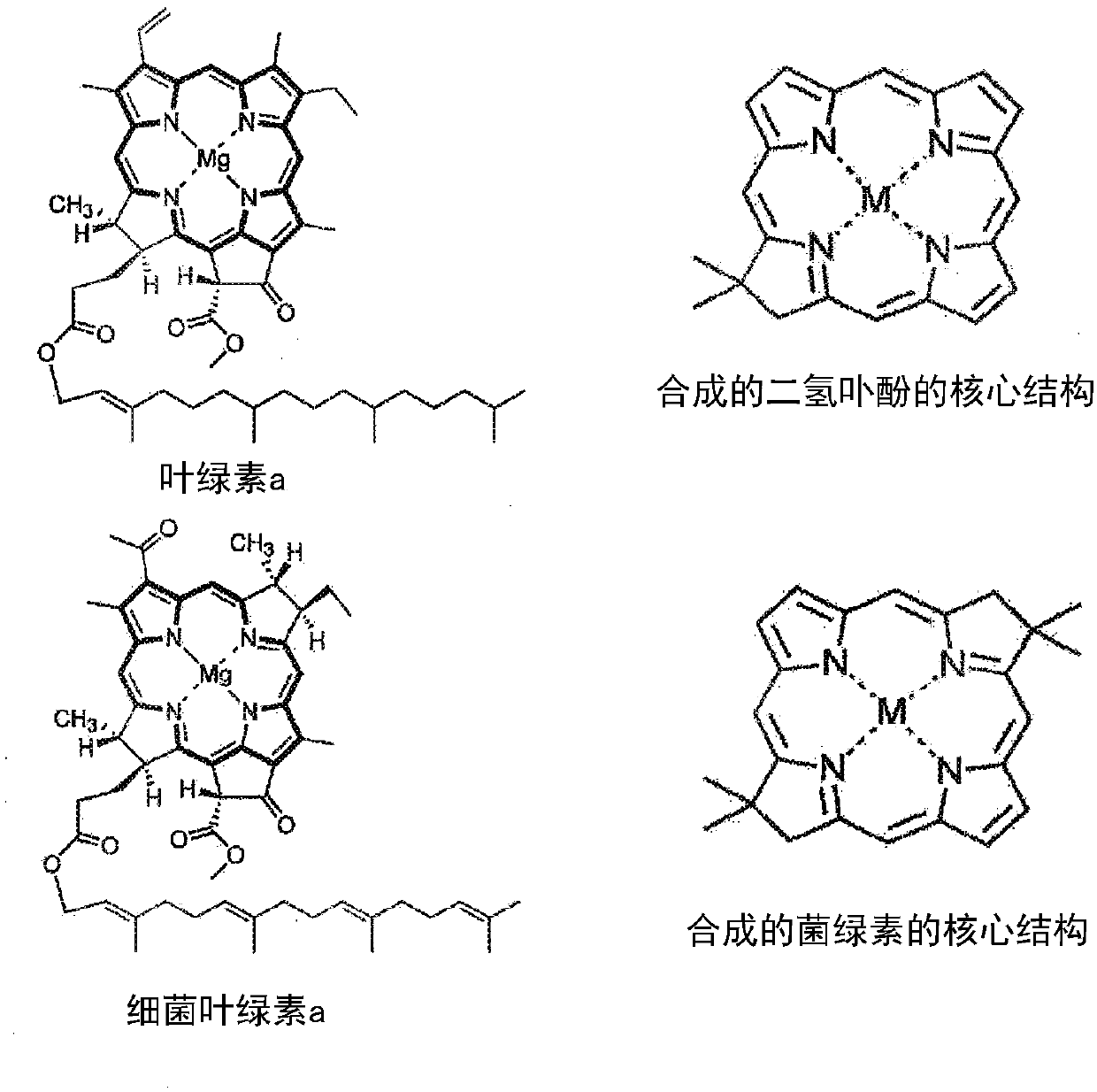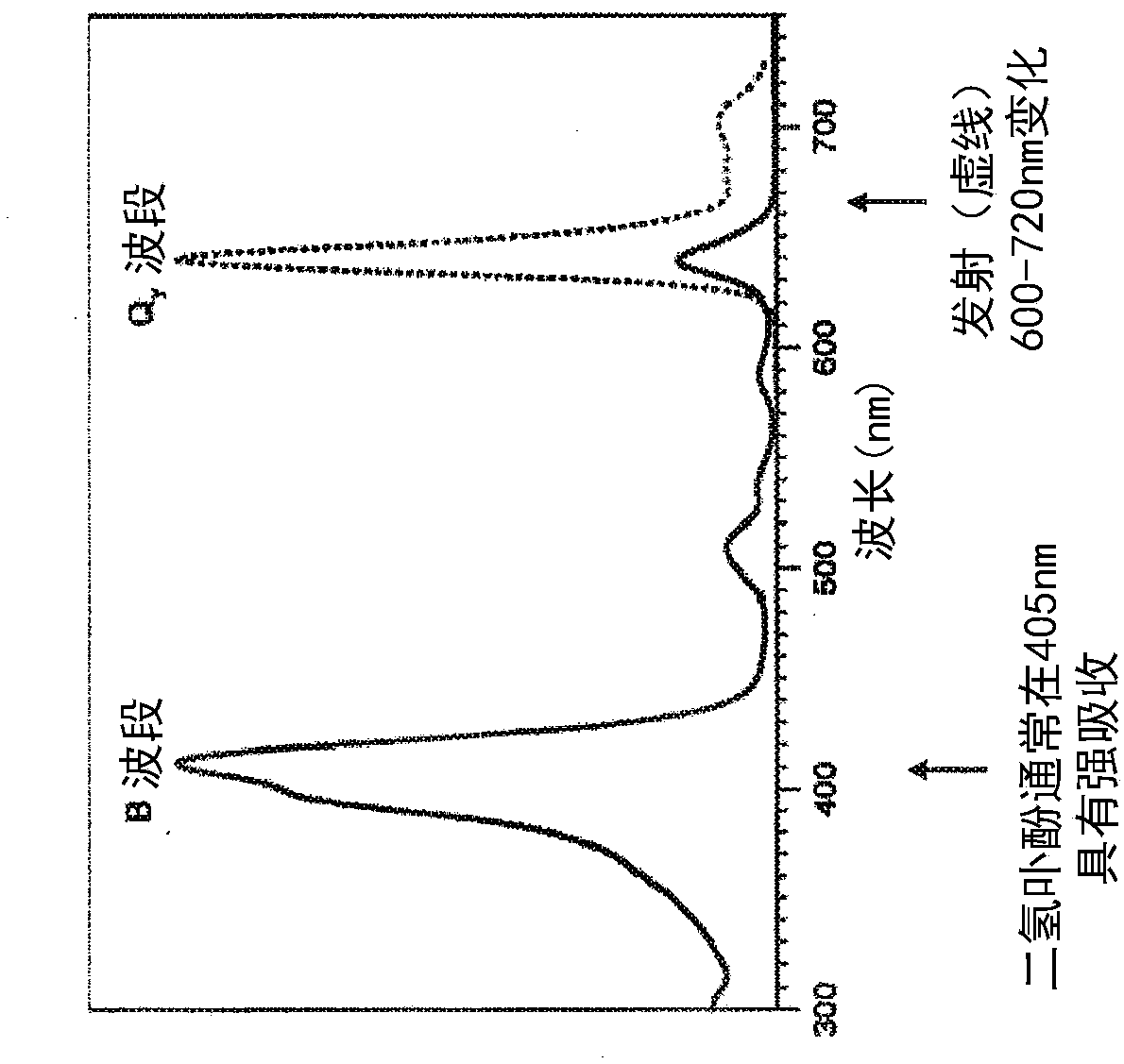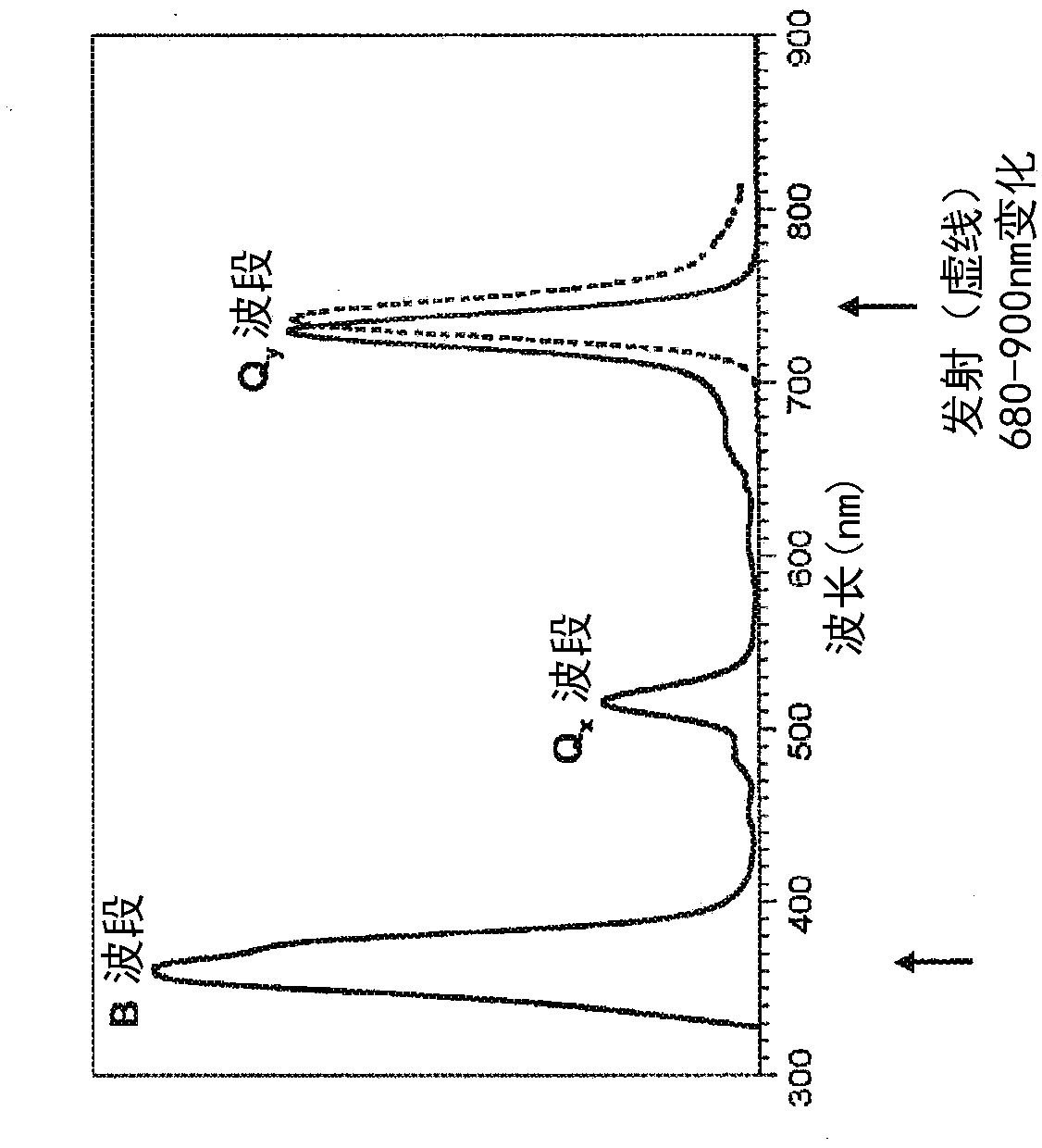Hydroporphyrin beads with narrow fluorescence emissions
A technology of fluorescent particles and porphyrins, applied in the field of hydrogenated porphyrin beads with narrow fluorescence emission, can solve the problems of reduced fluorescence sensitivity
- Summary
- Abstract
- Description
- Claims
- Application Information
AI Technical Summary
Problems solved by technology
Method used
Image
Examples
Embodiment 1
[0169] Staining of polystyrene beads with chlorins
[0170] Material: ® brand nonionic detergent was purchased from Sigma-Aldrich Co., LLC (St. Louis, Missouri, United States of America). Various chlorins, including SE197, SE211, SE420, SE355 and SE357 (see Figure 3), were obtained from John Lindsey of the North Carolina State University (Raleigh, North Carolina, United States of America). Inhibitor-free (BHT-free) tetrahydrofuran (THF) was purchased from Sigma-Aldrich Co., LLC (St. Louis, Missouri, United States of America; catalog No. 401757). Polystyrene (PS) beads (average diameter 5.43 μm) were purchased from Bangs Laboratories, Inc. (Fishers, Indiana, United States of America; Catalog No. PS06N). Water conforming to the National Committee for Clinical Laboratory Standards (NCCLS) was purchased from Worldwide Medical Corporation (Lake Forest, California, United States of America; Catalog No. ES612). Fluorescence was detected and quantified in a Varian Cary Eclipse ...
Embodiment 2
[0173] Flow cytometry with chlorin-doped PS beads was used to assess the relative brightness of the markers
[0174] Polystyrene beads (5.43 μm) were obtained from Bangs Laboratories and prepared as described in Example 1 using chlorins. Samples were prepared for flow cytometry in 5 mL polystyrene round bottom tubes (Cat. No. 352058, Corning, Inc., Corning, New York, United States of America). For negative controls, unlabeled polystyrene beads were treated with THF for loading as in Example 1, except no dye was added. The material was washed in the same manner and resuspended in water to be used as a blank in flow cytometry. For analysis, beads (blank or stained) were mixed with 0.05% Brand nonionic detergent in water diluted 1:400 into flow cytometry tubes.
[0175] Samples were analyzed on a 19-position parameter LSR-II SORP flow cytometer (BD Biosciences, San Jose, California, United States of America) at the University of North Carolina Core Flow Cytometry Facility (...
Embodiment 3
[0184] Staining of polystyrene beads with bacteriochlorin
[0185] Polystyrene (PS) beads (5.43 μm; Cat. No. PS06N / 6667, Bangs Laboratories) were stained with the three bacteriochloroins in a manner similar to that used in Example 1 to prepare the chlorin-stained beads. Bacteriochlorin was prepared according to Taniguchi et al., 2008 or Yang et al., 2011. Figure 6 shows the structures and fluorescence emission spectra of three green pigments in toluene.
PUM
| Property | Measurement | Unit |
|---|---|---|
| molecular weight | aaaaa | aaaaa |
| molecular weight | aaaaa | aaaaa |
Abstract
Description
Claims
Application Information
 Login to View More
Login to View More - R&D Engineer
- R&D Manager
- IP Professional
- Industry Leading Data Capabilities
- Powerful AI technology
- Patent DNA Extraction
Browse by: Latest US Patents, China's latest patents, Technical Efficacy Thesaurus, Application Domain, Technology Topic, Popular Technical Reports.
© 2024 PatSnap. All rights reserved.Legal|Privacy policy|Modern Slavery Act Transparency Statement|Sitemap|About US| Contact US: help@patsnap.com










